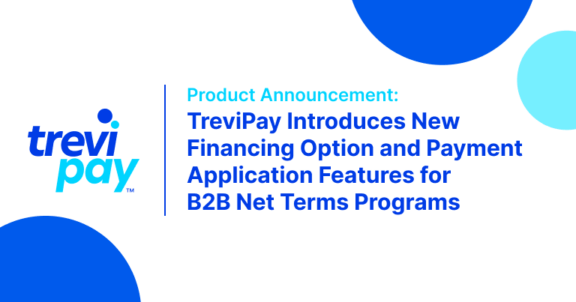News & Insights · Approx. 5 minute read
Why Financial Technology Is the Driving Force of eCommerce

The ultimate guide to fintech and its role in eCommerce, including how it makes the online shopping experience more convenient, efficient, and secure
In the digital age, it’s no secret that eCommerce is an increasingly popular option for shopping over brick-and-mortar stores.
According to research by Fundera, 16% of all retail purchases are made on eCommerce sites. They also anticipate that eCommerce will handle 95% of all consumer transactions by 2040.
There is a trend of people choosing to buy goods online rather than in physical stores more and more. Nevertheless, many people are unaware that eCommerce would not be possible without fintech.
This article explores the relationship between fintech and eCommerce and how it affects the entire retail industry.
How fintech makes eCommerce different from traditional commerce
The primary distinction between eCommerce and traditional commerce is accessibility to the market and scalability. Though it can be noted that fintech is available in both brick-and-mortar and online stores, it is more prevalent in the digital space. This is because fintech helps to reduce traditional barriers that have inhibited eCommerce growth in the past.
“There’s a huge trend taking place right now related to the rise in digital entrepreneurship and investors’ interest in digital investments,” said Blake Hutchison, CEO of Flippa. eCommerce allows entrepreneurs to start and grow a business with relatively low overhead costs than traditional companies.
In addition, fintech can enable businesses to streamline their operations, reduce costs and improve customer service. Additionally, it can help create new business models and products that were not possible before. This level of disruption sets eCommerce apart from traditional retail and makes it a more attractive option for consumers and businesses alike.
The level of disruption that fintech may cause in the market is another crucial distinction between eCommerce and traditional commerce. Fintech can completely change how businesses operate, which is particularly evident in the eCommerce space.
What do fintech and eCommerce have in common?
Fintech has disrupted the payment processing industry, making it easier and faster than ever for eCommerce businesses to accept payments from customers all over the world.
Not only does fintech make it easier for eCommerce businesses to process payments, but it also helps them manage their finances more efficiently. For example, it can help businesses track their spending, budget better, and invest money wisely. In addition, it can also help eCommerce businesses to expand into new markets and reach more customers.
Access to capital is another critical area where fintech and eCommerce intersect. “Sellers cannot thrive without the right capital in place and access to that capital quickly in case of an emergency or unexpected costs,” added Ricardo Pero, CEO of SellersFunding. “Maintaining a close relationship with a fintech partner will be critical for small and midsize retailers.”
Other commonalities include the use of technology, the focus on customer experience, and the need for trust. Fintech has helped to evolve eCommerce by making it more efficient, convenient and trustworthy.
Why is fintech essential for eCommerce?
More efficiency
Fintech allows for more secure and seamless transactions. By using online banking and payment processors, eCommerce businesses can offer their customers a faster, more convenient checkout process. “Fintech is helping eCommerce to bring out new trends to make it more successful,” said Christian Velitchkov, Co-Founder at Twiz.
Access to both B2B and B2C markets
Fintech is not only crucial for B2C eCommerce, but it’s also essential for B2B eCommerce. “Today’s B2B customers want B2C-like payment experiences, so e-commerce retailers must offer multiple ways to pay, offering buyers the same immediate gratification as a contactless B2C transaction,” said Brandon Spear, CEO, TreviPay. “Business customers also prefer to purchase on their terms and will spend more when they have a dedicated financial relationship and credit line with a business.”
Faster checkout times
There are also other benefits to using fintech for eCommerce, such as faster checkout times. This advantage can be in the form of saved time by using saved payment and shipping information, automatic checkout, or one-click buying.
“The rise of single-click checkouts from fintech companies has changed the game of convenience for online shoppers. Fintech companies such as Fast and Bolt provide this checkout solution for brands selling their products online,” stated Aman Ghataura, Head of Growth at Alphagreen Group. “The customer’s bank details and shipping address are already saved and confirmed, meaning the customer needs to click only once on the product page to confirm their order with the eCommerce company.”
Convenience
People can make purchases in the comfort of their homes or on the go. This convenience is possible due to the rise of mobile devices and apps. One example of this is messenger apps, such as WhatsApp or WeChat, which allow people to conduct transactions without leaving the app. There are also now chatbots, digital assistants that can help people with their shopping needs.
“Consumers will avoid call centres and new app downloads altogether and get things done in a simple, intuitive manner through Chat Commerce. For example, consumers travelling via plane may discover the opportunity to upgrade their seat when they’re alerted about a gate change and finalise that opportunity through chat,” noted Pieter de Villiers, co-founder and CEO of Clickatell. “The consumer may place an order and make a payment in real-time, using a card on file or an airline rewards card.”
Read the full article, originally published by Derin Cag for FinTech Magazine.
Stay up-to-date with the latest from TreviPay
Thank you for subscribing! You will now receive email updates from TreviPay.



